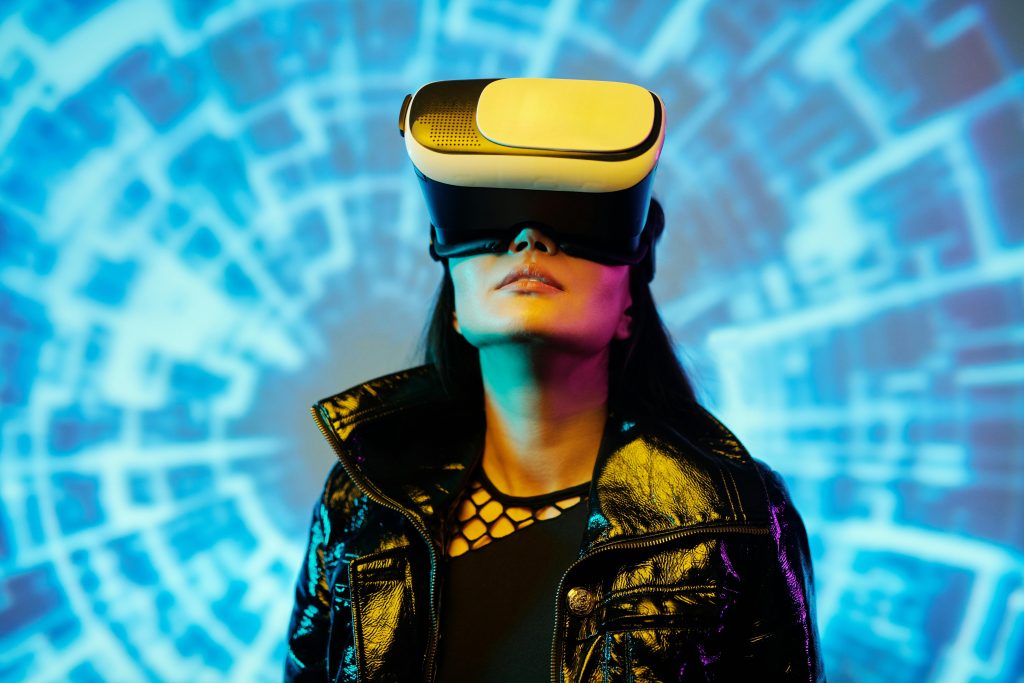
For decades, gamers have dreamed of stepping inside their favorite digital worlds. That fantasy is no longer the stuff of science fiction, thanks to two groundbreaking technologies: Virtual Reality (VR) and Augmented Reality (AR). Both promise to revolutionize how we play, but they approach immersion in fundamentally different ways. VR completely replaces your reality with a digital one, while AR overlays digital elements onto the real world. As these technologies mature and battle for market share, a pressing question emerges: in the ultimate showdown of AR vs VR in gaming, which immersive technology will dominate the future?
Defining the Realms: VR vs. AR Gaming
To understand their potential, we must first clearly define the two contenders.
Virtual Reality (VR) Gaming is an all-encompassing experience. By wearing a head-mounted display (HMD) like the Meta Quest 3, PlayStation VR2, or Valve Index, players are fully transported into a computer-generated environment. These headsets use advanced tracking and motion controllers to map your physical movements into the game, allowing you to swing a lightsaber, climb a cliff face, or cast spells as if you were truly there. The goal of VR is total sensory isolation and presence, making it the pinnacle of escapism in gaming.
Augmented Reality (AR) Gaming, on the other hand, uses the real world as its playground. Through the camera on a smartphone (like in Pokémon GO) or through transparent lenses in AR glasses (like Microsoft’s HoloLens or the emerging Meta Ray-Ban smart glasses), digital characters and objects are superimposed onto your physical surroundings. Instead of escaping reality, AR enhances it, turning your living room into a battlefield against alien invaders or your local park into a habitat for elusive creatures. The magic of AR lies in its blending of realities.
The Case for VR: The Champion of Deep Immersion
VR’s greatest strength is its ability to provide unparalleled depth of immersion. It is the undisputed king of simulated experiences.
- Total Escape: VR offers a complete break from the real world. There are no distractions, just pure, unfiltered engagement with the game’s universe. This makes it ideal for narrative-driven adventures, intense simulations, and social platforms where your entire identity is digital.
- Established Market and Hardcore Audience: The VR gaming ecosystem is already robust. Platforms like SteamVR and the Meta Quest store boast thousands of titles, from indie gems to AAA experiences like Half-Life: Alyx. A dedicated community of early adopters continues to drive software and hardware innovation.
- Precise and Intuitive Controls: With motion-tracked controllers and, increasingly, haptic feedback vests and gloves, VR allows for a level of physical interaction that traditional gaming cannot match. The learning curve is often natural—to grab an object, you simply reach out and close your hand.
However, VR faces significant hurdles. High-end setups are expensive and often require a powerful gaming PC, creating a high barrier to entry. The hardware can be bulky, and issues like motion sickness still affect a portion of users. Most critically, VR requires dedicated, empty physical space, making it a less spontaneous and more isolated activity.
The Case for AR: The Power of Accessibility and Social Integration
AR’s argument for dominance rests not on depth of immersion, but on breadth of accessibility and its seamless fit into daily life.
- Unmatched Accessibility: Nearly everyone has a smartphone, which is a fully functional AR device. This gives AR gaming a potential install base in the billions overnight, dwarfing the niche VR market. There is no need for expensive, specialized hardware to get started.
- Social and Mobile by Design: AR games are inherently social and mobile. They encourage movement, exploration, and interaction with the real world and the people in it. The phenomenal success of Pokémon GO demonstrated how AR can create global cultural phenomena that get people outdoors and connecting.
- The Future of Wearable Tech: The evolution of stylish, everyday AR glasses could be the killer app. Imagine a future where your standard pair of glasses can layer a game over your lunch break or during your commute, without isolating you from your environment. This always-on, context-aware gaming is AR’s ultimate promise.
AR’s current weaknesses are technological. Smartphone-based AR is often limited by small screens and battery drain. True AR glasses with a wide field of view, all-day battery life, and powerful processing remain largely in development. Furthermore, anchoring compelling gameplay to the often unpredictable real world presents a unique design challenge.
The Verdict: A Symbiotic Future, Not a Single Winner
So, which technology will win? The most likely answer is that the future of immersive gaming won’t be a winner-take-all battle but a spectrum of experiences where both AR and VR thrive by serving different purposes.
VR will dominate the “destination gaming” space. It will be the go-to technology for hardcore gamers seeking deep, uninterrupted immersion in fantastical worlds. It will be the equivalent of going to the movies—a dedicated, high-fidelity experience you plan for.
AR will conquer the realm of “ambient gaming.” It will be for quick, social, and contextual experiences woven into the fabric of our daily routines. It will be the technology that turns waiting in line or walking through a city into a potential gameplay opportunity.
We may even see the lines blur with Mixed Reality (MR) experiences, which combine the best of both. We already see glimpses of this on devices like the Meta Quest 3, which can pass through a video feed of your real surroundings and anchor digital objects to it, allowing for experiences that are both immersive and aware of your space.
Conclusion
The question isn’t whether AR or VR will dominate gaming, but how each will define a new category of play. VR offers a powerful portal to elsewhere, providing the deepest form of digital escape we’ve ever known. AR offers a magical lens to enhance our existing world, making the ordinary extraordinary. One is not inherently better than the other; they are different tools for different jobs. As hardware becomes more advanced, affordable, and comfortable, both technologies will become integral parts of the gaming landscape. The true winner will be us, the players, granted an unprecedented choice in how we wish to experience and interact with the games we love.






